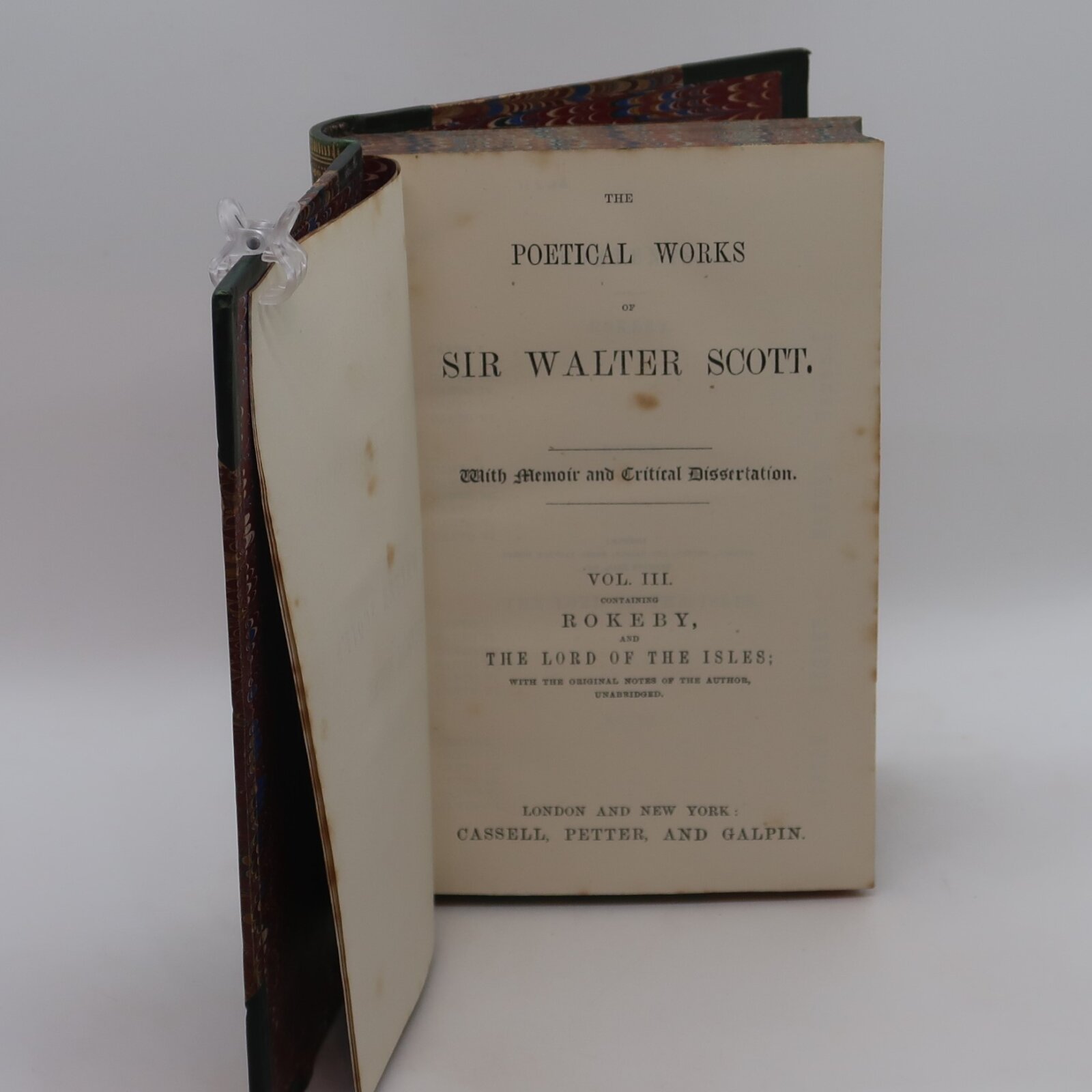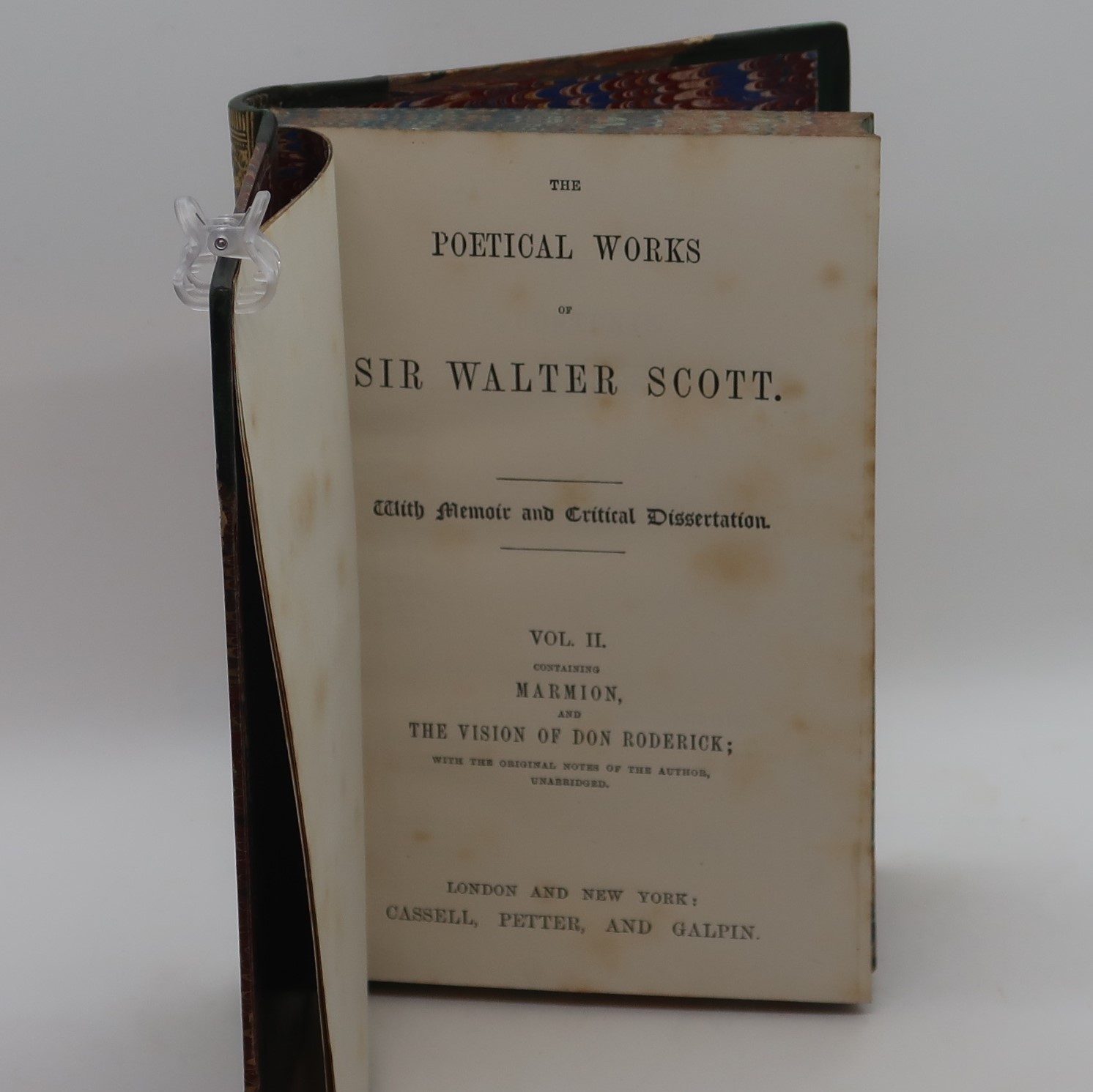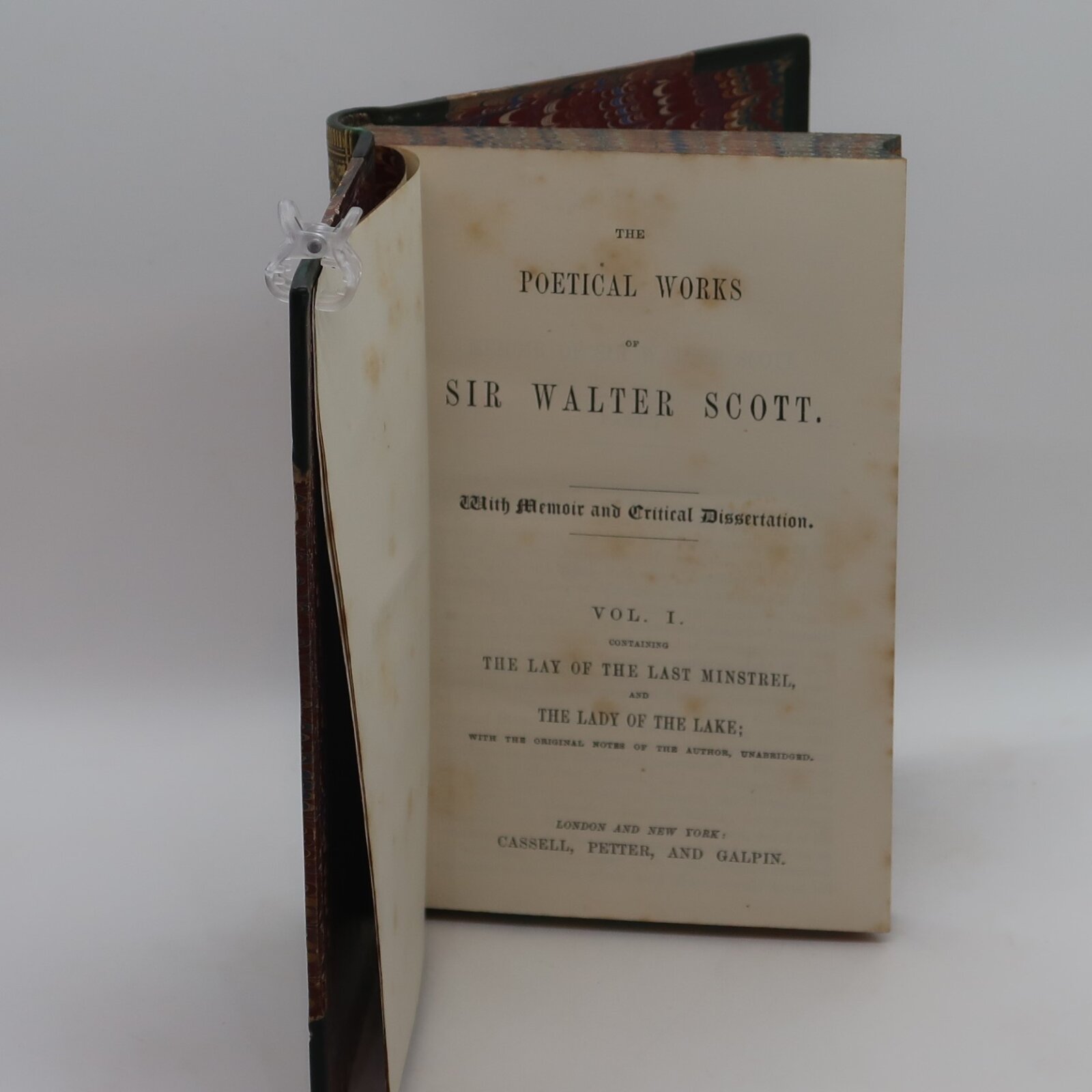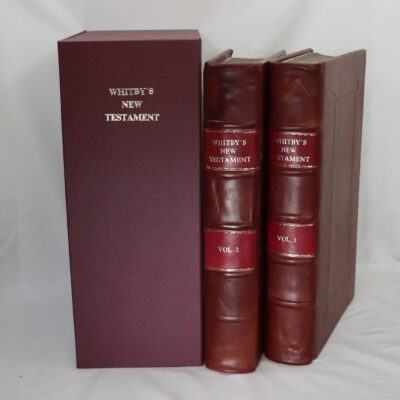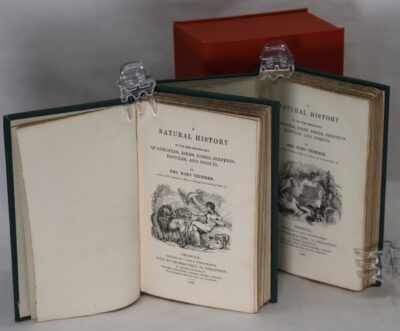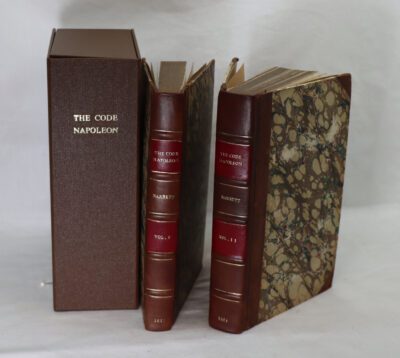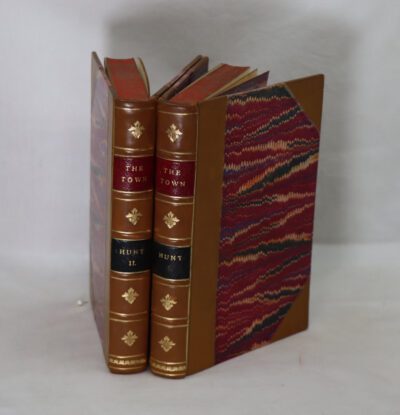Scott's Poetical Works. Volumes 1. II. & III.
By Sir Walter Scott
Printed: circa 1850
Publisher: Cassell, Petter & Galpin. London
| Dimensions | 14 × 19 × 2.5 cm |
|---|---|
| Language |
Language: English
Size (cminches): 14 x 19 x 2.5
Condition: Fine (See explanation of ratings)
Your items
Item information
Description
Dimensions are for one volume.
A well-appointed collection
SIR WALTER SCOTT, the fourth child of Walter Scott, writer to the Signet of Edinburgh, was born in that city on the 15th of August 1771. He came of the Border family, the Scots of Harden, an offshoot from the house of Buccleuch. His childhood was passed for the most part at Sandyknowe, the farm of his Father in Roxburghshire. In 1783, he went to the University. From his earliest childhood onward, he was a ravenous and insatiable reader; his memory was of extraordinary range and tenacity, and of what he read and observed he seemed to have forgotten almost nothing. In 1786, he was apprenticed to his father, in whose office he worked as a clerk until 1895, in which year he was called to the bar. In his profession he had fair success, and in 1797 he was married to Charlotte Margaret Carpenter.
Meantime his leisure had been occupied with literature. His first publication, a translation Burger’s ballads, “Lenore” and “The Wild Huntsman”, was issued in 1796. In 1804, he issued an edition of the old poem, “Sir Tristrem”, ‘Meantime , ‘The Lay of the Last Minstrel’, had been in progress, and by its publication in 1805, Scott became at a bound the most popular author of his day.
During the next ten years he gave to the world the poems “Marmion”, (1808), “The Lady of the Lake” (1810), “The Vision of Don Roderick” (1811), “Rokeby” (1812), “The bridal of Triermain” anonymously published (1813). “The Lord of the Isles” and “The Field of Waterloo”.
The enthusiasm with which the earlier of these works were received somewhat began to abate as the series proceeded. This Scott distinctly noted, and after what he felt as the comparative failure of “The Lord of the Isles” in 1815, with a trivial exception, he published no more poetry. But already in Waverly, which appeared without his name in 1814, he had achieved the first of a new and more splendid series of triumphs. “The Antiquary”, “The Black Dwarf”, “Old Mortality”, “Rob Roy”,”The Heart of Midlothian” rapidly followed, and the Great Unknown, as he was called, (whom yet every one could guess to be no other than Walter Scott), became the idol of the hour.
From this time onward for some years, Scott stood on a pinnacle of fame and brilliant social prosperity that no other British man of letters had reached. In 1820, to set a seal upon all this distinction, a baronetcy was bestowed upon him as a special mark of royal favor. But sudden ruin smote the stately fabric of his fortunes. Through the failure of the printing and publishing house of James Ballentine, in which he was a partner, Scott found himself one forenoon bankrupt, with personal liabilities to the extent of something like ?150,000. With his creditors composition would have been easy; but this usual course he disdained. “God granting him time and health,” he said, he would owe no man a penny. Breaking up the establishment at Abbottsford, where the wife whom he loved lay dying, he hired a lodging at Edinburg, and there for some years, with stern and unfaltering resolution, be toiled at his prodigious task. The stream of novels flowed as formerly; a “History of Napoleon” in eight volumes, was undertaken and completed, with much other miscellaneous work; and within the space of two years Scott had realized for his creditors the amazing sum of nearly ?40,000. A new and annotated edition of the novels were issued with immense success, and there seemed every prospect that, within a reasoable period, Scott might again front the world, as he had pledged himself to do, not owing to any man a penny. But the limits of endurance had been reached.
In 1830, he was smitten down with paralysis, from which he never thoroughly rallied. At Abbotsford, on the 21st of September, 1832, he died with his children around him, and the murmur of the Tweed in his ears. On the 26th he was buried beside his wife, in the old Abbey of Dryburgh.
Sir Walter Scott, 1st Baronet FRSE FSAScot (15 August 1771 – 21 September 1832), was a Scottish historical novelist, poet, playwright and historian. Many works remain classics of European and Scottish literature, notably the novels Ivanhoe, Rob Roy, Waverley, Old Mortality, The Heart of Mid-Lothian and The Bride of Lammermoor, and the narrative poems The Lady of the Lake and Marmion. He had a major impact on European and American literature. As an advocate, judge and legal administrator by profession, he combined writing and editing with daily work as Clerk of Session and Sheriff-Depute of Selkirkshire. He was prominent in Edinburgh’s Tory establishment, active in the Highland Society, long a president of the Royal Society of Edinburgh (1820–1832), and a vice president of the Society of Antiquaries of Scotland (1827–1829).] His knowledge of history and literary facility equipped him to establish the historical novel genre and as an exemplar of European Romanticism. He became a baronet “of Abbotsford in the County of Roxburgh”, Scotland, on 22 April 1820; the title became extinct on his son’s death in 1847
Want to know more about this item?
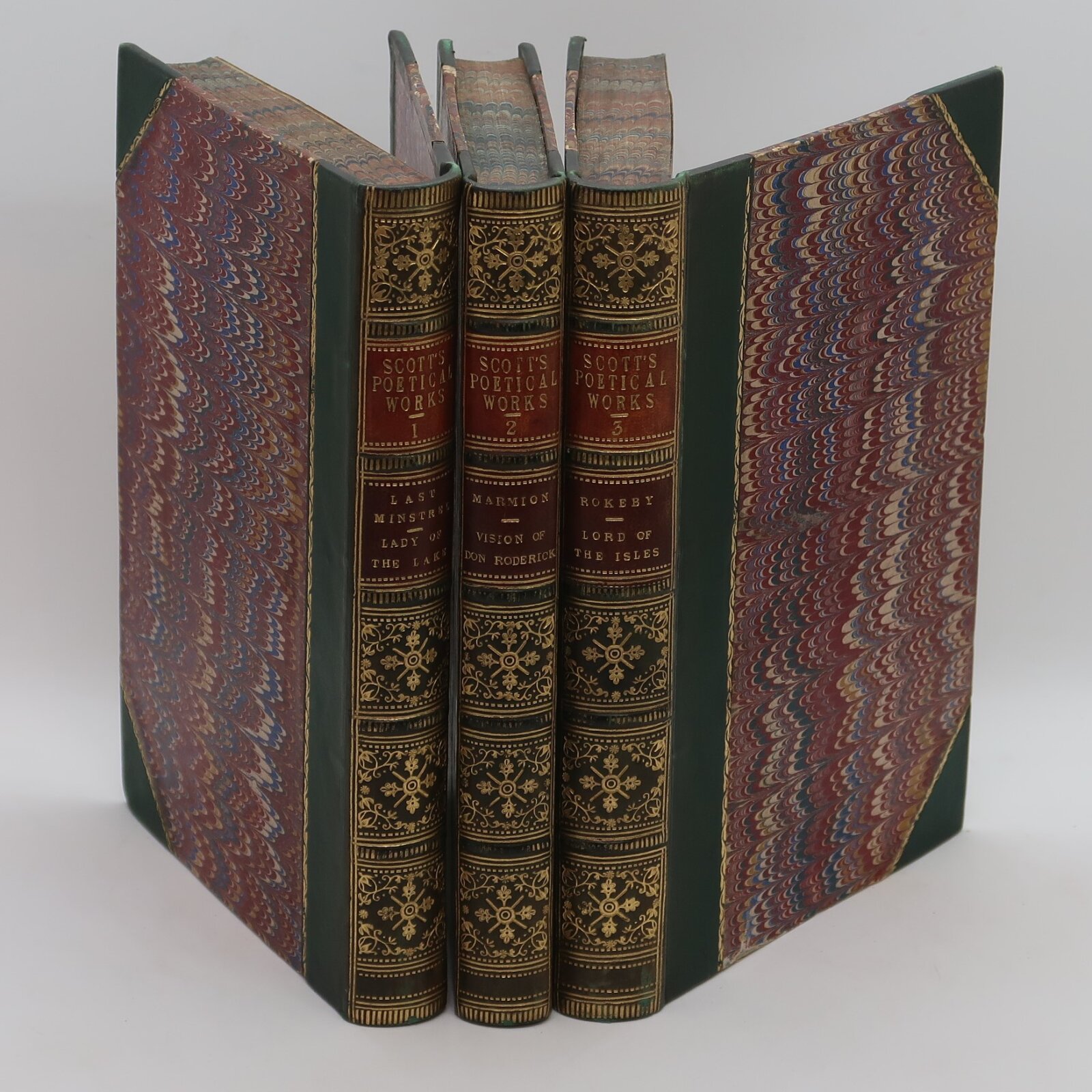
Related products
Share this Page with a friend

